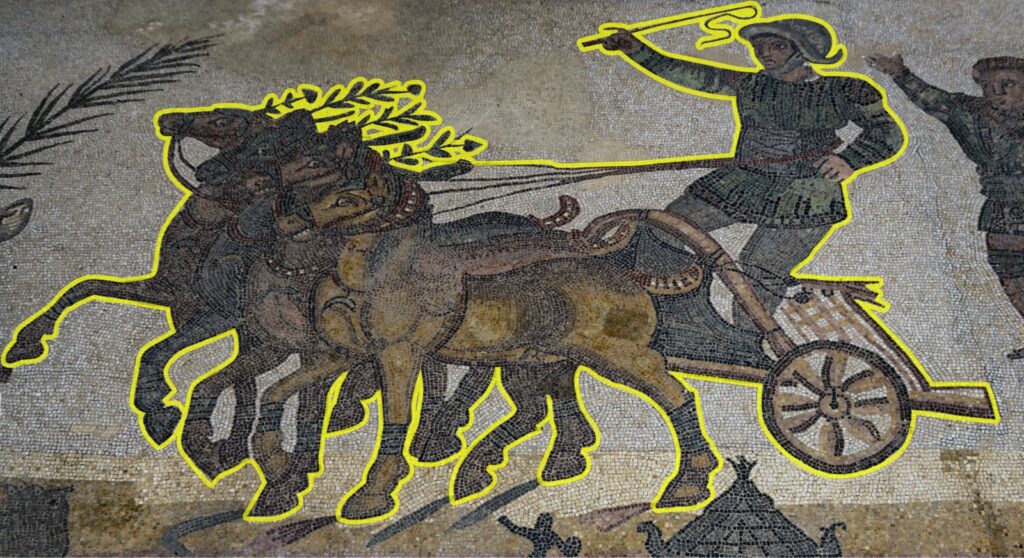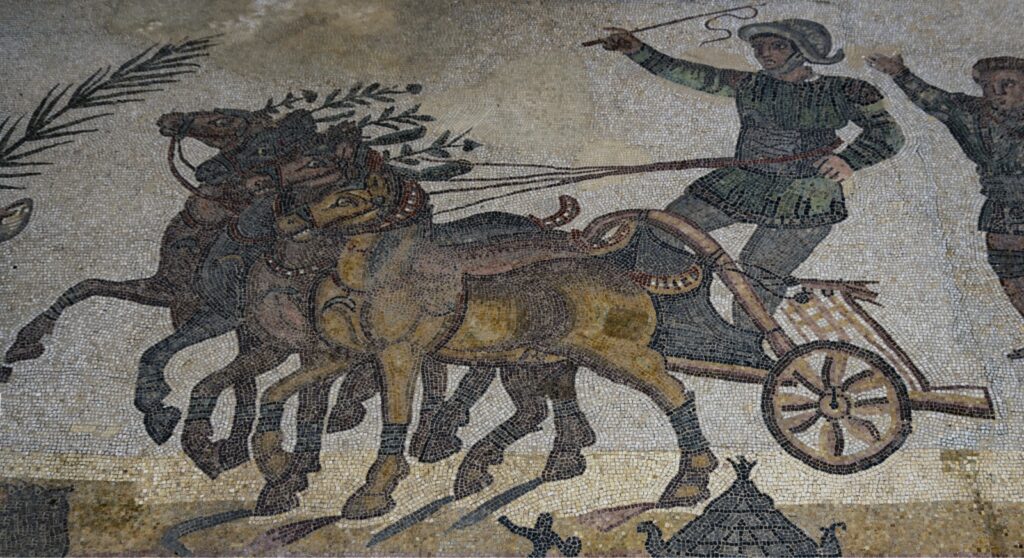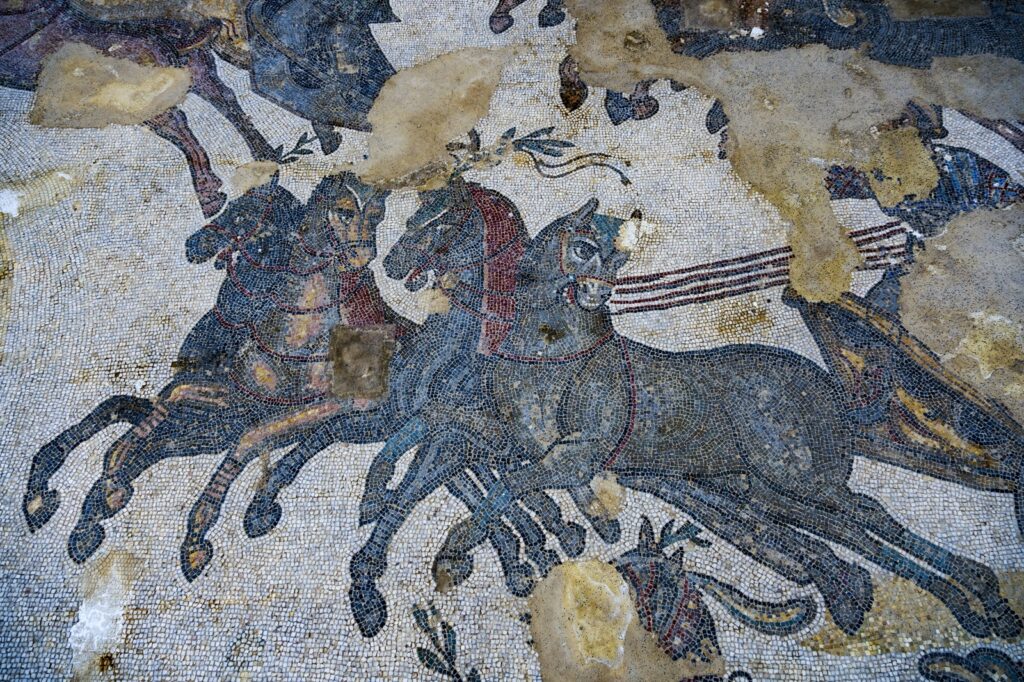 The protagonists of the circus races were the chariots pulled by four horses and those who drove them, the charioteers. They were some of the most popular competitions in the Roman world and required careful preparation of the crews, clearly visible in the mosaic floor in the northern apse of the hall of the Villa del Casale, where, in the Circus Maximus, two charioteers are represented preparing for the race, flanked by servants giving them the tools for the competition: a light helmet and a whip.
The protagonists of the circus races were the chariots pulled by four horses and those who drove them, the charioteers. They were some of the most popular competitions in the Roman world and required careful preparation of the crews, clearly visible in the mosaic floor in the northern apse of the hall of the Villa del Casale, where, in the Circus Maximus, two charioteers are represented preparing for the race, flanked by servants giving them the tools for the competition: a light helmet and a whip.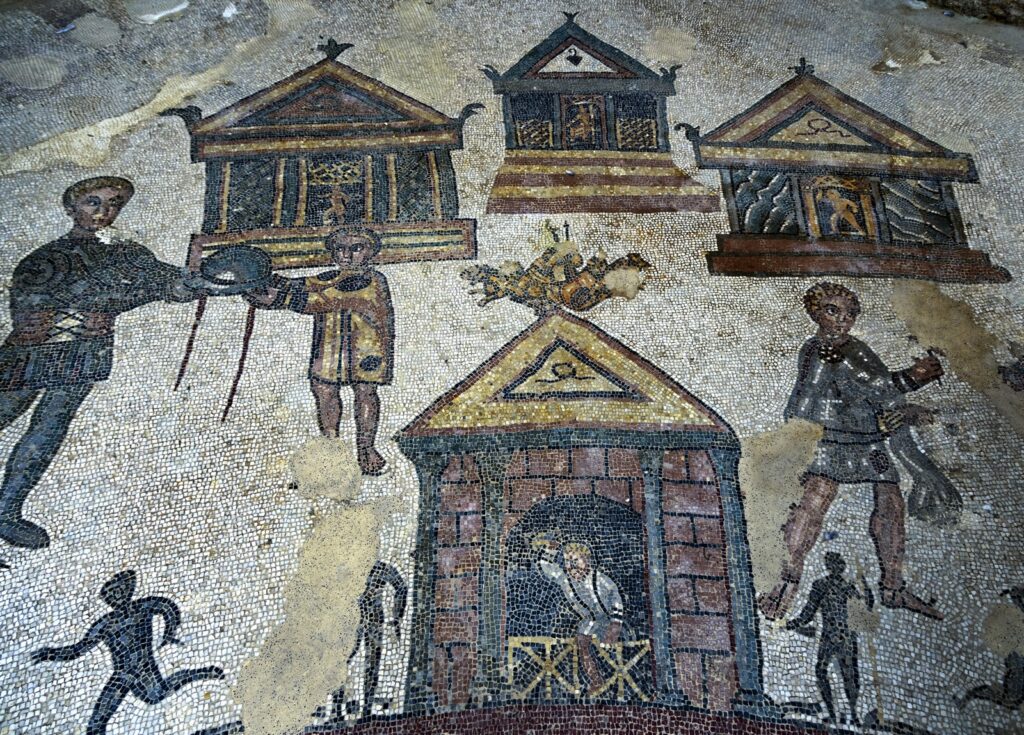
The race, with the protection of the main detioities of the Urbe represented by sacred buildings, identifiable in the north of the room, began from the carceres, twelve gates from which the chariots started, present in the villa in smaller numbers. 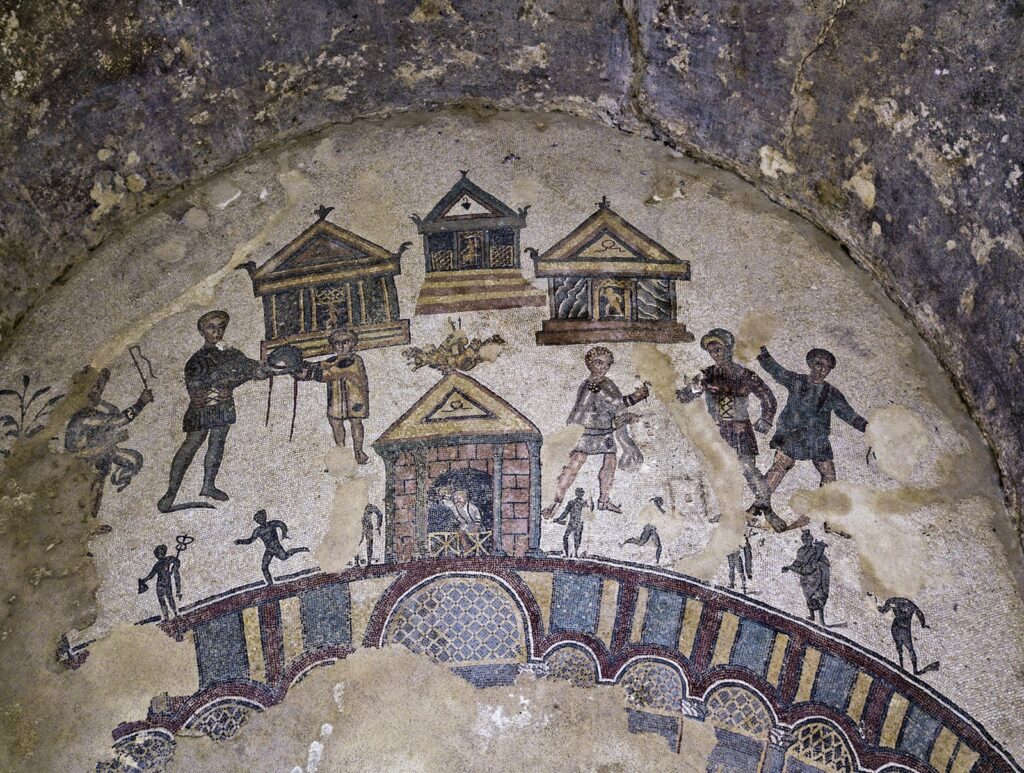 The crews were divided into four teams with as many colours: red, white, green and blue.
The crews were divided into four teams with as many colours: red, white, green and blue.
The competition, with its dizzying pace already at the opening of the gates, was preceded by the throwing of a cloth, the mappa, by the magistrate who funded the race, the editor spectaculorum, located on the platform specifically for him above the carceres.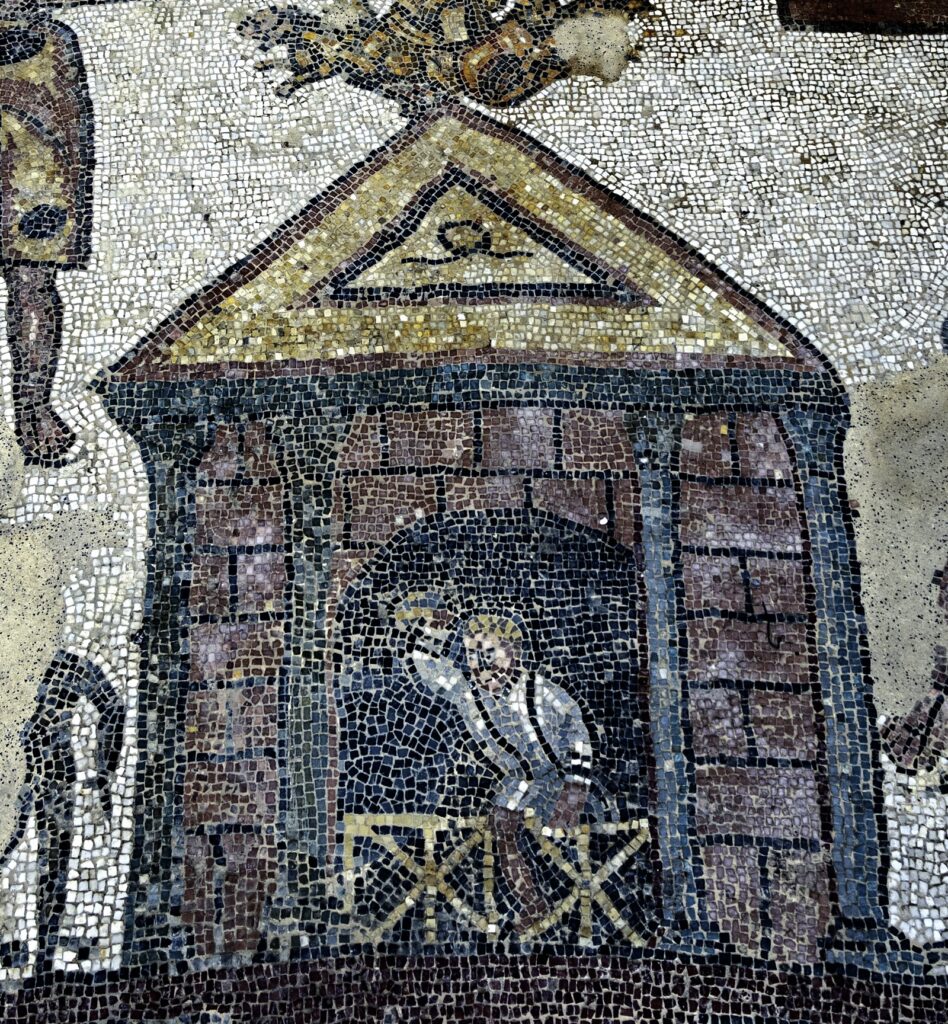
The laps around the spina, where spectacular clashes took place, were counted by judges using the system of seven eggs and dolphins, which were lowered until the end of the race. 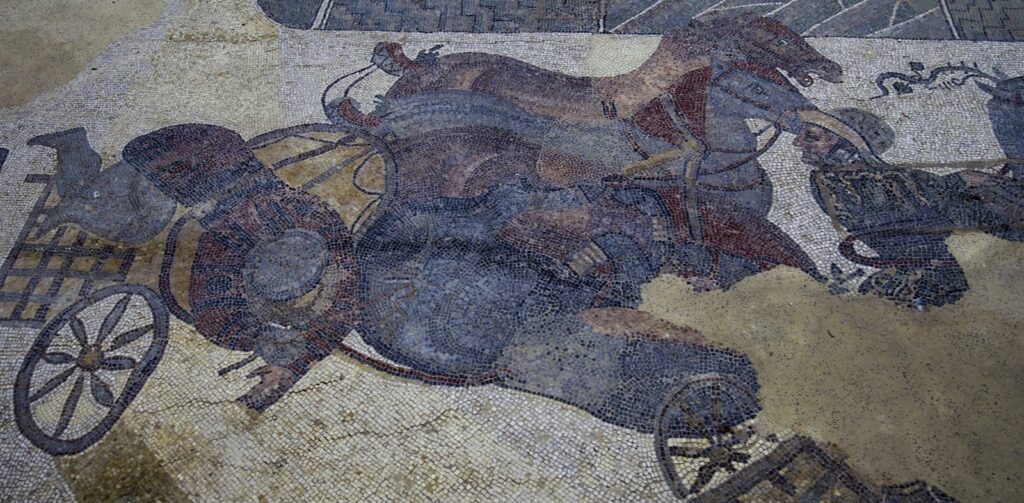
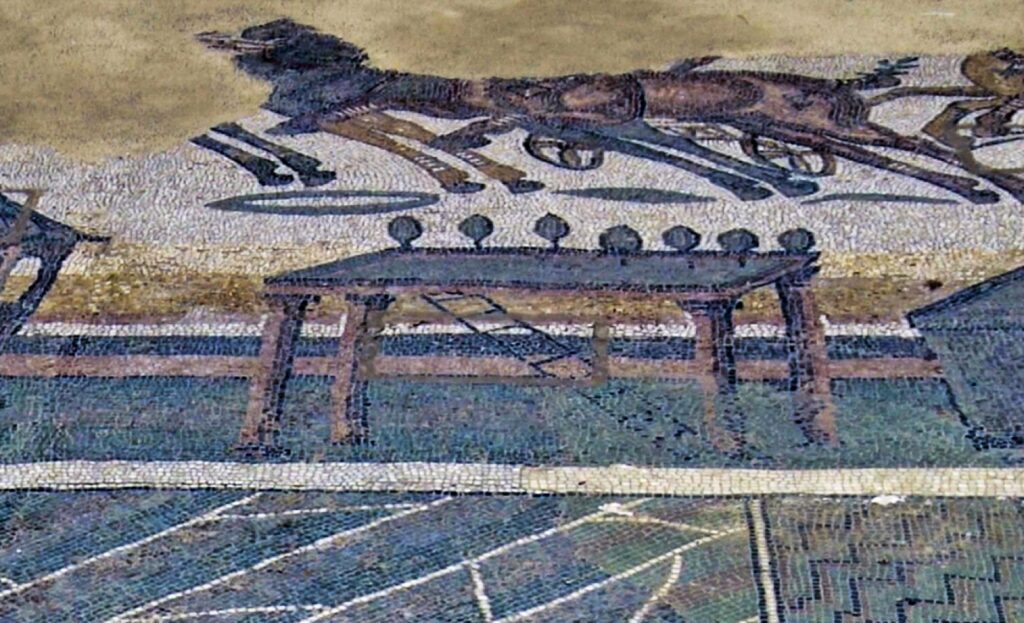 The arrival at the finish line of the winning wagon was announced by a trumpeter, accompanied by the authority in charge of distributing the prizes: the ritual crown and money.
The arrival at the finish line of the winning wagon was announced by a trumpeter, accompanied by the authority in charge of distributing the prizes: the ritual crown and money.
